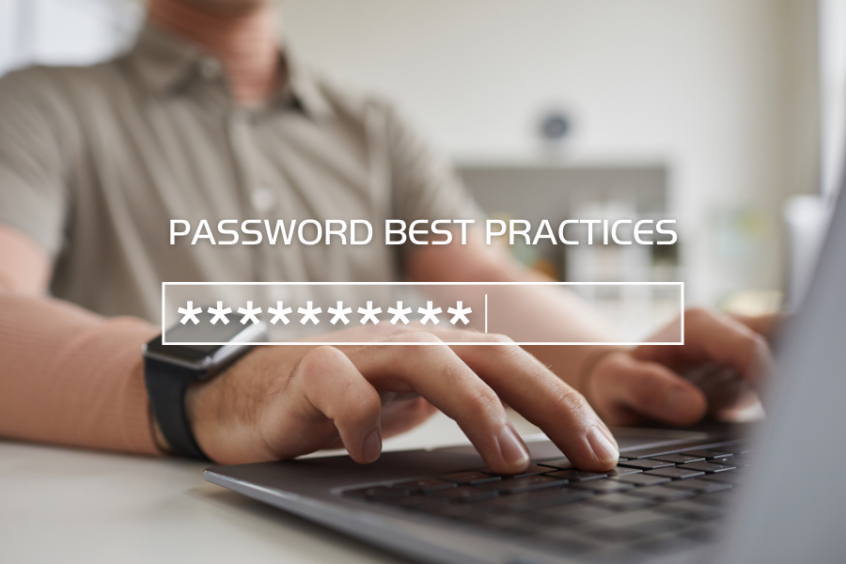Today’s business world is heavily reliant on digitalization. Using technology in your business is crucial if you want to stay competitive.
But despite the advantages that technology affords, there are several aspects of it you need to keep a close watch on if you hope to keep your business safe from cyberthreats. This is why interest in cybersecurity has skyrocketed in recent years.
If you want to increase your company’s cybersecurity efforts, password protection is a great place to start.
Password protection simply means setting passwords to secure your data. Once your information and account data is password-protected, only those who know the passwords can access it. However, because passwords are used so frequently, people tend to underestimate their significance and make careless mistakes that could lead to security breaches.
Because of this, it is imperative to educate your employees on the following password best practices.
Top 6 Password “Don’ts”
Password confidentiality is vital if you hope to protect the security of your data. Protect the confidentiality of your passwords by following these password “don’ts”.
1.) DON’T write passwords on sticky notes
You may feel that keeping track of your passwords in writing makes it more difficult for someone to steal them online. And it’s true that an online hacker would have difficulty stealing a sticky note from your desk drawer. However, keeping a physical list of passwords can make it easier for someone to steal your passwords locally.
2.) DON’T save passwords to your browser
Web browsers are terrible at protecting passwords and other sensitive information (like your name and credit card number). Your web browser can easily be compromised by a slew of malware, browser extensions, and software that can extract sensitive data from them.
3.) DON’T iterate your password
An example of iteration is changing your password from FastRunner1 to FastRunner2. Although this is a common practice among digital users, it will not give you the robust protection you need to guard against sophisticated cyberthreats. Hackers have become far too intelligent and can crack iterated passwords in the blink of an eye.
4.) DON’T use the same password across multiple accounts
By doing so, you are essentially handing cybercriminals a golden opportunity to exploit all of your accounts.
3.) DON’T capitalize the first letter of your password to meet the “one capitalized letter” requirement
Out of habit, we tend to capitalize the first letter of our passwords to conform with the “one capitalized letter” requirement. However, hackers are all too aware of this, so it makes it easy for them to guess the capitalized letter’s position.
4.) DON’T use “!” to conform with the symbol requirement
If you must use an exclamation point in your password, don’t place it at the end. Placing it anywhere else in your password will make it more secure.
Top 6 Password “Do’s”
Now that you know what not to do, let’s take a look at what you should do to keep your passwords secure. Protect the confidentiality of your passwords with these password “do’s”.
1.) Create long, phrase-based passwords, using numbers and symbols in place of letters
For instance, if you want to use the phrase, “honey, I shrunk the kids” in your password, write it as “h0ney1$hrunkth3k!d$.” This makes your password much harder for hackers to crack.
2.) Change critical passwords every three months
There is a lot at stake if the passwords protecting your sensitive data are compromised. And using the same password for a long time gives hackers plenty of time to crack it. This is why it’s important to change critical passwords often — ideally, every three months.
3.) Change less critical passwords every six months
Any passwords that you deem less critical can be used a little longer…but not much. All passwords — including less critical ones — should be changed at least every six months.
4.) Use multifactor authentication
One of the best ways to keep cybercriminals at bay is to create an extra barrier of protection with multiple layers of authentication. If a hacker has to not only crack your password, but also read your email or text messages to access your account, they will be much less likely to gain access.
5.) Always use passwords that are longer than eight characters and include numbers, letters, and symbols
Make your password as difficult to hack as possible. The more complicated your password is, the better.
6.) Use a password manager
Don’t want to commit so much of your memory to remembering a long list of passwords? A password manager can take that off your plate, freeing up your time for more productive tasks.
Need a Password Manager? SOL-I.S. Can Help
Adhering to these password best practices requires constant vigilance and effort on your part. Working with an expert managed service provider (MSP) like SOL-I.S. takes some of that burden from your shoulders.
SOL-I.S. can help you boost your cybersecurity and put your mind at ease by implementing a password manager and other tools to keep your sensitive data safe.
Contact us for a free consultation and to learn more about how SOL-I.S. can help you protect your business.

